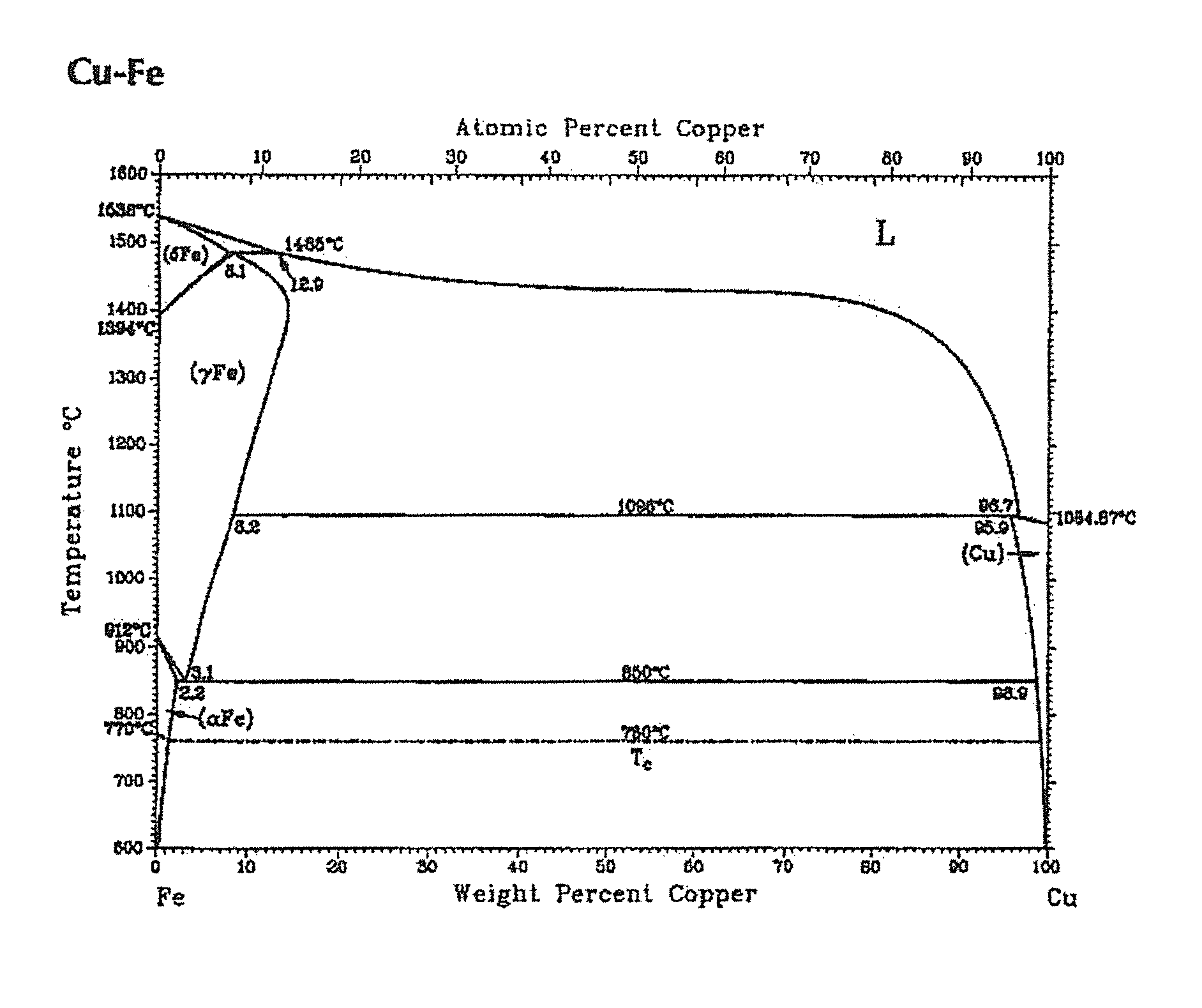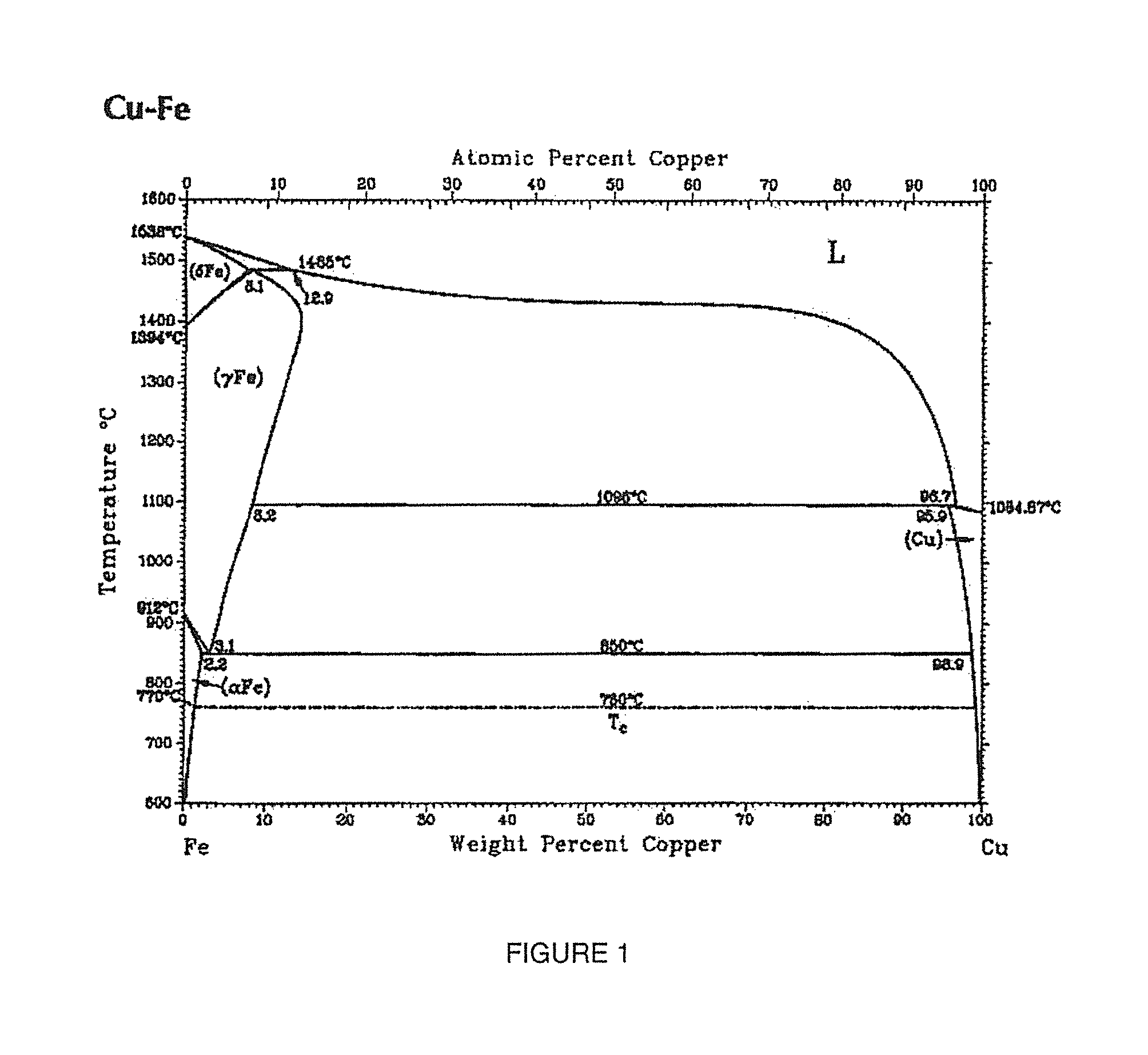Lead-free, corrosion-resistant projectiles and methods of manufacture
- Summary
- Abstract
- Description
- Claims
- Application Information
AI Technical Summary
Benefits of technology
Problems solved by technology
Method used
Image
Examples
Embodiment Construction
[0013]The invention identifies a range of copper-iron alloys and the processing methods to produce lead-free alternative projectiles or bullets comprised of a homogeneous microstructure containing fine copper and iron phases. The iron-copper binary system is utilized to create a dense, low-cost projectile suitable for replacement of all lead-based bullets and other projectiles. The range of possible compositions allows material designers to select desired levels of density and cost.
[0014]Suitable powder atomizing techniques, wherein molten metal is dispersed into particles by rapidly moving gas or liquid stream or by mechanical processes, are employed to optimize the final phase distribution, maximizing mixing of the insoluble iron and copper phases. A rapid cooling or quench rate achieved with these atomization techniques, resulting in a homogeneous microstructure which is ideal for use in bullets and projectiles. The resulting uniform density throughout these parts lends to greate...
PUM
| Property | Measurement | Unit |
|---|---|---|
| Temperature | aaaaa | aaaaa |
| Length | aaaaa | aaaaa |
| Weight ratio | aaaaa | aaaaa |
Abstract
Description
Claims
Application Information
 Login to View More
Login to View More - R&D
- Intellectual Property
- Life Sciences
- Materials
- Tech Scout
- Unparalleled Data Quality
- Higher Quality Content
- 60% Fewer Hallucinations
Browse by: Latest US Patents, China's latest patents, Technical Efficacy Thesaurus, Application Domain, Technology Topic, Popular Technical Reports.
© 2025 PatSnap. All rights reserved.Legal|Privacy policy|Modern Slavery Act Transparency Statement|Sitemap|About US| Contact US: help@patsnap.com



